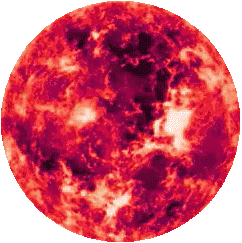
Kepler 438 Star System
The Kepler 438 Star System contains 1 Star and 1 Planet.
1 Planet is a habitable planet candidate, planet Kepler 438 I.
The Kepler 438 Star System is located within near the inner rim of the Orion Arm, in the Milky Way Galaxy, which is 26,000 light years away from the massive Sagittarius black hole at the center of the Galaxy.
/ Star & Planets / Stars & Planets List 0 to 20 Light Years / Kepler 438 Star System
2,780.767 Trillion Miles
473.0000 Light Years
145.0220 Parsecs
Kepler 438

M Flare Class Red Dwarf
6,286 F Phtosphere
Extreme Flares
4.4 Billion Years Old
Population I Star
Heavy Element Rich
Main Sequence
1 AU = 92,955,807 Miles
Chemical Rocket Travel Time
4.73 Million Earth Years
Fission Rocket Travel Time
9,517.10 Earth Years
Fusion Rocket Travel Time
4,758.55 Earth Years
Laser Light Sail Travel Time
2,379.27 Earth Years
Kepler 438 Planets Probability to Host Life
Kepler 438 I (Keparth): The chances for life on Kepler 438 I are considered remote and unlikely due to the intense radiation from its super-flaring red dwarf star, which is thought to have stripped away any atmosphere the planet may have had, making it an uninhabitable environment. While initially promising due to its size and location within the habitable zone, the planet's atmosphere is likely gone, leaving it exposed to harsh radiation that would be devastating to life. However, more research is needed to confirm this.

Join the Exo Solaria Union
Help aid in UAP research, Stay informed on the UAP phenomenon, and to help push the United States government for full disclosure regarding UAP and alien species.

The planet Kepler 438 I has a possibility of being habitable, but it is unknown if it even has an atmosphere, due to its star's extreme flares. However, Kepler 438 I is a Super Terran sized planet, which might give it an advantage to hold on to an atmosphere despite the flares from its star.